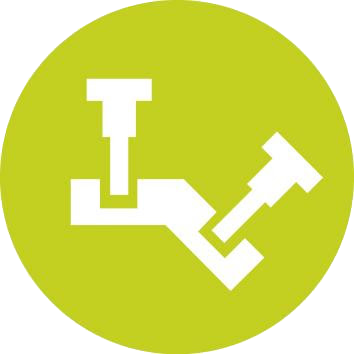Make big picture analysis of your equipment needs
One of the most important decisions to make regarding the expansion of multi-axis capabilities is what equipment to select. You don't always have to buy the most expensive equipment to achieve your objectives but it is important to remember that you typically "get what you pay for." Here are some questions to help guide your equipment decision-making process.

What kind of work are you doing currently? Look around. What jobs are being processed?
Is this what you plan to do for the next five years or can you imagine cutting something else?
Are these current parts the size you would like to be making or do you think about making larger parts?
What machine configuration is best for the parts you are currently making while transitioning to other types of parts in the future: head/head, table/table, or head/table. Every machine is suited to some jobs better than others.
An important consideration in selecting equipment is the impact the choice will have on programmer/operators. In many shops, especially the smaller ones, the programmer and operator are the same person. Ideally, a new multi-axis machine will free up a programmer/ operator's time to write more programs because he is spending far less doing setups. This advantage, however, can be negated if he or she is overwhelmed by a multi-axis programming learning curve that is too steep.
In this case, a good strategy is to build up the shop's multi-axis capabilities in small progressive increments. A good place to start would be acquiring a single rotary device, which can be easily installed or removed from a 3-axis machine. This allows the shop to start out doing index work and then progressing to work requiring a continuous 4-axis motion. Next step would be a 5-axis with dual rotary capabilities. Programmers can lock one axis and perform continuous rotary actions on the other axis. With this experience under their belts, the programmer/operator can progress to more complex work on a dedicated 5-axis machine.
Even if there is an ideally suited equipment selection available, many shops are still reluctant to make the move because of fears that it might become mired in a range of unexpected details that will delay multi-axis implementation and getting an ROI. These important details can be anticipated and should be planned for.